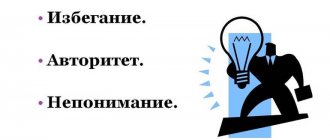The Eisenhower Matrix is a method of effectively organizing time that helps you achieve quick and significant results and always be on time.
Money can’t buy time, but I would like to master the secrets of existence and add at least another hour to the day. It's simple: planning is your ideal assistant on the path to well-being. It is planning that will help you get out of a constant state of time pressure and avoid irritability and disappointment.
The Eisenhower Matrix helps you achieve more and solves important planning problems. Feeling like a squeezed lemon is the standard state most people feel at the end of the working day. The situation can be changed with a 180 degree turn.
For the first time, an outstanding politician, and formerly a talented military man, the 34th President of the United States, Dwight David Eisenhower, began a serious search for a solution to the problem of effective time management. More and more people prefer to use the Eisenhower matrix to achieve efficiency in business.
Creator of the Eisenhower Method
Dwight David Eisenhower was born in 1890 into an ordinary family. In 1909 he graduated from school, then 4 years of study at the military academy. With particular passion, Eisenhower studied the biography of Lincoln and the greats of this world. The parents supported their son in everything. The support of loved ones in his youth would have a positive impact on Eisenhower's career in the future.
Resignation in 1948 did not mark the end of active work. After Eisenhower became rector of the Columbia Institute, and at the beginning of 1953 he took the post of President of the United States - he was later elected to this post several times. The politician faces the question of effective time management, and Eisenhower solves it.
The Eisenhower Matrix as a method of organizing time
Now we clearly understand that time management is a tool that helps to effectively plan tasks and manage time while saving energy. In the 1950s, Eisenhower did not know this.
The Eisenhower Matrix was created to help solve urgent and important problems. It is not recommended for use in long-term planning, but for daily goal setting, this method has no equal. The simplicity of use makes the Eisenhower pyramid accessible to all people.
Increase productivity and optimize costs by putting the Eisenhower principle into practice. Help yourself get rid of eternal worries and worries.
Use the Eisenhower Matrix as a prioritization tool. Visually, these are 4 quadrants, in each of which tasks for the current day are noted. The main thing is to accurately differentiate them by degree of urgency and importance.
Conventionally, these quadrants are divided into:
- Quadrant A (important and urgent);
- Quadrant B (important and not urgent);
- Quadrant C (not important and urgent);
- Quadrant D (not urgent or important).
“Is it such a simple task to just fit tasks into quadrants?” you might think. This method is really simple, but like anything you need practice to hone your skills.
Who invented the matrix and why is it called that?
The matrix received its name in honor of the 34th US President Dwight Eisenhower, who once said:
— I have two types of problems: urgent and important. The urgent are not important, and the important are never urgent.
It is usually claimed that Eisenhower himself came up with the matrix, but we have not found any serious evidence for this. One of the earliest descriptions of this technique is found in the German time management specialist Lothar Seiwert in the book “Mehr Zeit für das Wesentliche” (1984), which was published here as “Your time is in your hands.”
The matrix gained wide popularity after American business coach Stephen Covey spoke about it in his book “The Seven Habits of Highly Effective People” (1989). This is why the Eisenhower matrix is sometimes called the Stephen Covey matrix (or quadrants).
Characteristics of quadrants
To help you understand how to fit tasks into the quadrants, below is a detailed explanation for each of them.
Quadrant A (important and urgent)
If this quadrant has 2 or more items daily, pay attention to self-discipline. Ideally, there are no records in this sector. This indicates a person’s organization and active life position. In case of laziness and eternal procrastination “for tomorrow,” quadrant A will always be filled.
Set priorities correctly and do not allow an eternal list of important and urgent matters in the sector.
If you ignore the And quadrant and still fail, enter into it cases that meet the following requirements:
- These are matters whose urgent failure will have a negative impact on your health.
- Failure to do these things will certainly lead to failure, crisis and trouble.
- If you put off a task until later, it is impossible to achieve the final goal.
In quadrant A we enter all tasks related to family, health and career. If you are a student, studying is also a priority area.
Give up the principle: if you want to do it well, do it yourself. This is fundamentally wrong. Successful people who have mastered delegation significantly relieve their day.
Delegation allows you to entrust the execution of a task to another person, but the responsibility for the quality of the work performed lies with the person who delegated. Teach an employee to do it well and without adjustments once and use his skills later. Enter the tasks correctly and everything will work out.
Quadrant B (important and not urgent)
In quadrant B you need to include important matters that do not require extreme urgency. For example, you work in a large organization, your task is promotion. The decisive factor in achieving the goal will be the production optimization project. The manager expects the final numbers by Monday, but you have everything ready on Wednesday. Naturally, the issue is important, but does not require urgent implementation. By Monday, you can still double-check the report several times and make sure there are no hiccups.
Quadrant B deserves special attention. Ideally, it should be filled, and quadrant A should be empty. If you can achieve this in practice, you are on the path to financial success. Solve important and non-urgent tasks every day and live a happy, rich life full of bright emotions, develop, build a career and earn more money, use leverage to the maximum to achieve your goals.
Don’t let things get to the point of rush, focus on the main thing and complete tasks one by one with high quality. Get results using the Eisenhower Method.
Quadrant C (not important and urgent)
The appearance of unimportant but urgent matters is difficult to predict. For example, the coffee maker broke down. Repairing kitchen equipment is not the first priority, but freshly brewed coffee still gives strength and optimism in the morning. Starting the day with a fragrant cup of an invigorating drink is much more pleasant than without it. Do you understand the essence of the C quadrant?
The Eisenhower method of time planning is ideal, the main thing is to correctly delimit tasks. You will learn this over time. Let's look at another example.
The home appliance store has a promotion on all vacuum cleaners. Today only you can purchase any with a 50% discount. Yours broke a long time ago, but you can manage without it, and the offer is tempting.
So, let's figure it out. Is buying a vacuum cleaner important to you now?
In principle, you can wait, if not for one “but”: the discount attracts you.
This is urgent?
Yes, because the vacuum cleaner is available at an attractive price only today.
Now do you understand what principles are used to select cases for quadrant C? Don't rush into distribution. Take the Eisenhower table seriously and the time investment will be compensated when you see the effects of the Eisenhower method.
Quadrant D (not important or urgent)
A person cannot constantly keep himself in tension and solve only vital problems. Sometimes we need a reboot and the to-do list from quadrant D will provide us with it.
Some believe that this is a waste of time and that unnecessary things will not bring any benefit and will lead to degradation. Of course, this applies to nicotine and alcohol abuse. There is no point in arguing here. But what if we are talking about conversations with friends and family, for example? We are part of society and without neutral communication we will turn into robots that perform daily effective tasks. Social networks will inform you about changes in the lives of classmates, and reading an interesting book will charge you with enthusiasm and give you new knowledge.
In addition, based on the requirements of drawing up the Eisenhower diagram, quadrant D should include things that bring us comfort and pleasure, namely: going to a restaurant with a loved one, visiting a hairdresser, or attending exhibitions and concerts. These activities are pleasant and beneficial for both men and women.
Rarely does the D quadrant get any attention. It usually stays clean. But psychologists strongly recommend writing down and marking tasks that bring moral satisfaction and emotional relief.
How to correctly distribute tasks in a table
Let us select the main ones from the above for the convenience of using the Eisenhower method. Distribute tasks in the table according to 4 quadrants:
- Priority important and urgent tasks that must be completed without delay.
- Important but not urgent tasks that should be completed as soon as possible. They have a big impact on the final goal, but they don’t “burn.”
- Unimportant and urgent tasks that are unlikely to affect the positive outcome of something.
- We allow ourselves to do things that are not important or urgent when we want to relax and get distracted.
You will become a master when there is a dash on the list of urgent and important tasks in the A quadrant. Hurry is depressing, doesn’t allow you to catch your breath, and the quality of the completed task often leaves much to be desired. Do not rush to be upset if at first the to-do list in quadrant A is longer than in the other quadrants. You are not the first to learn from your mistakes. Given your experience, in the future you will be able to cope with difficulties and bring the filling of the Eisenhower table to automaticity.
Quadrant 1: do it immediately
Quadrant 1 contains tasks that are both urgent and important . These are “do first” things because they are significant to your life or career in some way and need to be done immediately. You feel that these things are critical.
These are things that need to be done to avoid negative consequences . It is important to be able to manage goals in this quadrant of the Eisenhower Matrix.
An example of a Segment 1 mini-goal in your career could be responding to a time-sensitive email from a client.
This matrix can also be used in your personal life. An example of such a function in personal life could be registering a newborn baby, shoulder pain and the requirement to find a massage therapist, or buying tickets for tomorrow's train.
❷
How to put the Eisenhower matrix into practice
The time has come to implement the acquired knowledge. You know enough to start using the Eisenhower planning method in your life.
Follow these simple rules to avoid common beginner mistakes:
- It is better to outline a list of tasks in the evening. Decide right away which one is more convenient for you to use. This could be a notepad, a tablet, or the Eisenhower Matrix in Excel on your phone. Even a regular A4 sheet will do. The main thing is that the data is always at hand.
- While you are a beginner, write a list of all your to-dos on a separate sheet of paper and only then enter it into the Eisenhower table. Later, you can skip this point and immediately classify tasks by importance and necessity.
- Read the task list carefully, while asking yourself the question of urgency.
When classifying cases on the Eisenhower Scale, ask yourself:
- Is this task within the realm of my priority values? If the answer is positive, then it is important, if negative, it is not important.
- Will there be negative consequences for me if I don't complete this task? This question will also determine the degree of importance.
- The degree of urgency is determined by the duration of the task's relevance. If it is impossible to complete a task tomorrow, then urgency is paramount.
Be sure to leave free space on your to-do list if you have compiled it on paper. You can supplement it. You need to move tasks unfinished today to your task list for the next day. If you read the article carefully, you understand that unfinished business will be present on the Eisenhower table every day.
Example of a completed Eisenhower matrix
Let's take as a basis one day in the life of a school geography teacher.
Following the recommendations from the previous paragraph, let's make a list of things to do in the evening (the list is short, it is important to understand the essence of the Eisenhower method):
- Tomorrow there are 4 lessons in high school: at 8.30, 10.00, 12.00 and 14.00 (between lessons I will do social affairs).
- We need to find out why the advance payment did not arrive on the card last month (I don’t want to go to the accounting department for cash every time).
- I want to change my haircut and adjust my hair color (I’ve been thinking about this for a long time).
- Send the book to a colleague from another city by mail (I promised that I would do this at the beginning of the week).
- We need to go to the supermarket (there are enough groceries left for a couple of days).
In real life there are many more tasks, but for the exercises we will make do with five points.
The result of the distribution of cases according to the Eisenhower method:
- As you already understood, the 1st point is important and necessary, we will write it in quadrant A.
- Quadrant B will fill the important but not urgent matter of the 2nd point.
- Quadrant C will contain the urgent but not important task of point 4.
- Things numbered 3 and 5 go to quadrant D. They are not urgent and not the most important, but they will bring you pleasure and allow you to relax.
Now try it yourself.
Under what conditions will the Eisenhower Matrix be useful to you?
The matrix helps in planning complex and important tasks. Understand how the method works and apply it to short-term planning.
Feel free to use the Eisenhower table in life if:
- it is difficult to determine the primary task, it is difficult to understand where to start;
- be honest with yourself and truthfully answer questions asked when planning;
- want to optimize time costs;
- you know that you are capable of more, but you don’t understand how to achieve a better result;
- stop putting things off until tomorrow.
In order to achieve results, it is not enough to study the Eisenhower matrix. Only by applying this knowledge in practice will you see the effect.
Advantages and disadvantages of the method
The Eisenhower Matrix is often touted today as an ideal way of setting priorities that works flawlessly in almost any situation. But this is not true: the matrix, like other time management techniques, has its advantages and disadvantages. Let's look at them in order.
Advantages
1. Simplicity. The matrix is very easy to master: it does not require long-term study of theory and mastery of complex algorithms. And to use this technique, just find a sheet of paper and some kind of pencil. Its popularity is mainly due to this simplicity.
2. Fast results. Essentially, prioritization comes down to quickly assessing tasks and distributing them among four squares. For people who regularly use the matrix, this process usually takes no more than 2-3 minutes.
3. Versatility. The technique can be used virtually anywhere: at work, in school, in business, etc. However, the versatility of the matrix does not mean that it always gives the best results.
4. Suitable for any planning horizon. Using the Eisenhower Matrix, you can sort things by day, by week, by month, or even by year.
5. Convenient time management diagnostics. The matrix helps you quickly identify gaps in your planning system. For example, if tasks from square D begin to dominate on the to-do list, then a person should think about self-discipline and the fight against chronophages.
6. Simple determination of the right strategy. If our to-do list is dominated by tasks from quadrant B and we focus primarily on completing them, then our chances of achieving our goals increase significantly.
You may already be good at managing your time.
What if you don't need Eisenhower's methods and are just fine with problems without tables? Ready to decide right now?
Then answer these questions honestly:
- Do you always make a to-do list?
- Do you respond to emails on time?
- Do you go home on time and working on the weekend is not about you?
- Does social media and chatter interfere with important tasks?
- At the end of the day, are you irritable and feeling like you could have done more?
- Do you always pay due attention to your family?
Think about whether you want to change the current state of affairs or leave everything as it is. Eisenhower Table - Your planning assistant.
Quadrant A: important and urgent matters
- Things that, if not completed, jeopardize the achievement of the goal.
- Problems that need to be solved in order to avoid big difficulties in life.
- Health issues.
If you are a monster of efficiency, then this quadrant will be empty for you: you simply will not get things done until you get into the “fire” sector. But you're not an efficiency monster (and neither are we), so that's unlikely to happen. The most important thing is that things happen there infrequently and in small quantities. If half of your task list is there, it’s a disaster.
However, there is no need to panic. In order for this quadrant to be empty, you first need to work on maintaining the other sectors.
A few related tips for organizing and saving time
Use these tips when implementing the Eisenhower Method:
- Don't overload yourself with unimportant things.
- Keep your workplace clean and don’t waste time looking for documents; train yourself to be tidy.
- Try to do important things in the first half of the day, and not in the evening, when activity declines.
- Best the enemy of the good. Take the matter seriously, but without fanaticism.
And one last piece of advice. Choose one direction in which you prefer to understand best. It's impossible to know everything.









